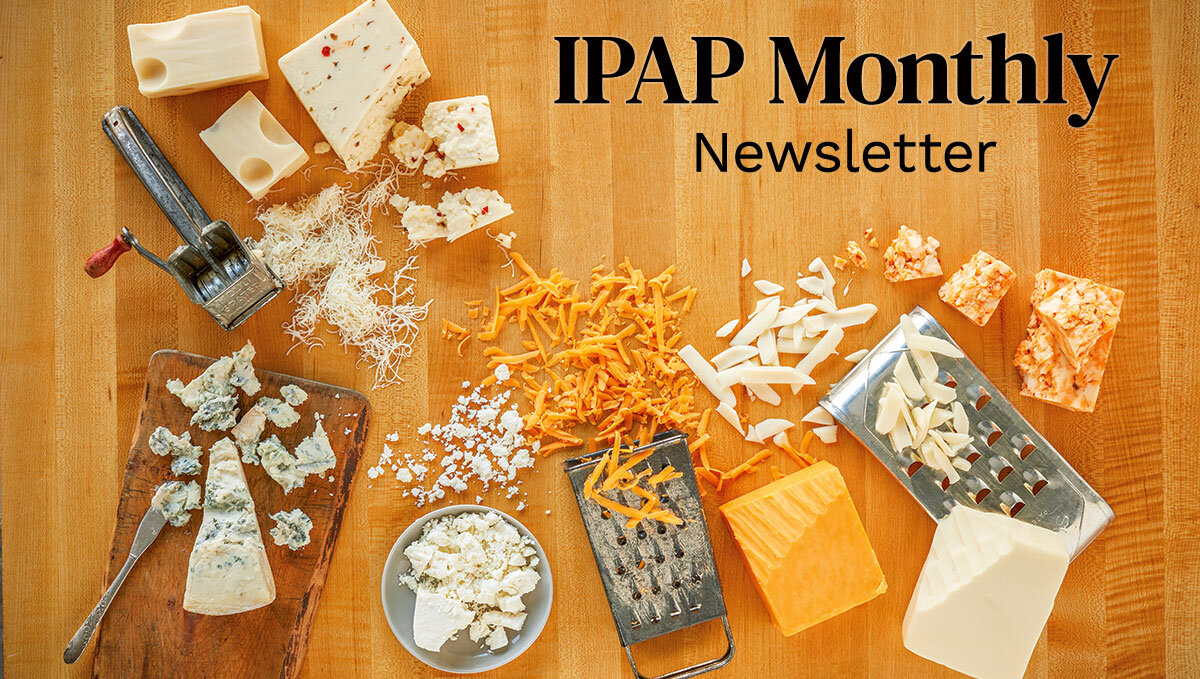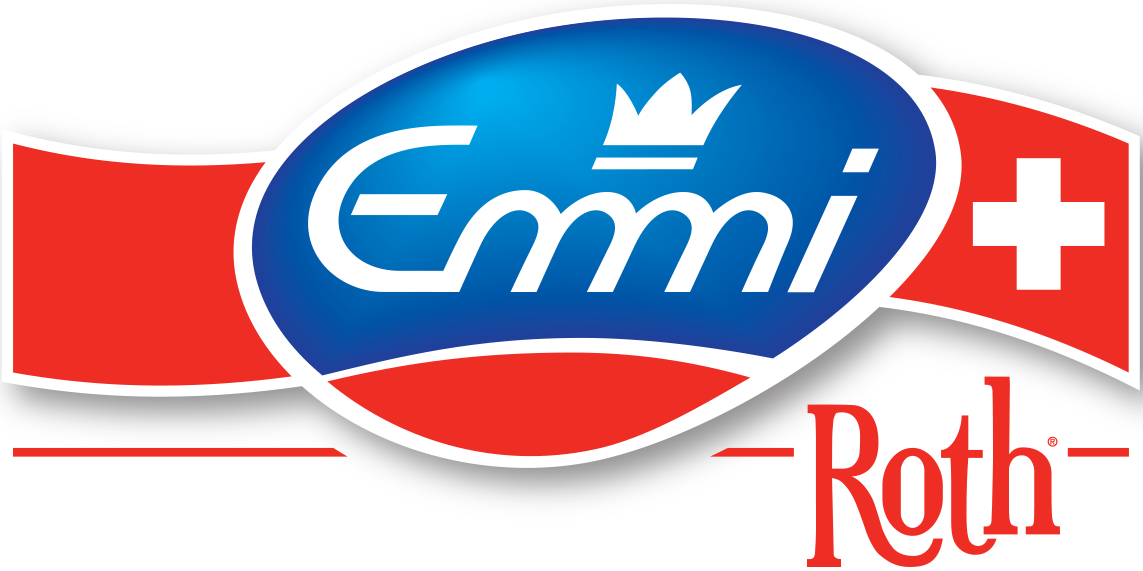

When you walk the inner aisles of a grocery store, chances are you stock up on foods prepared with palm oil.

Palm oil is a vegetable oil appearing in half of all packaged items found in supermarkets – margarines, biscuits, breads, breakfast cereals, instant noodles, chocolates, ice creams and more. This common ingredient is widely used in processed foods for its unique properties as a milk fat or hydrogenated fat substitute due to its functionality and low flavor profile.
Produced with palm oil rather than butterfat, Schreiber’s cream cheese substitute is a cost-friendly solution to your establishment’s cream cheese needs. The product’s clean flavor tastes like cream cheese in baking and frying applications. Taste testers rated it highly for its similarity to cream cheese in both cheesecakes and fried foods.
Schreiber’s suggested list of applications includes:
- Crab rangoons
- Jalapeño poppers (pictured)
- Sauces
- Dips
- Soups
- Sushi
- Cheesecakes
- Frosting
- Pastry filling

We all love cream cheese, and it deserves to keep a place in our kitchens. Restaurant operators may opt for a substitute ingredient in some situations due to performance or cost:
- Schreiber’s cream cheese replacement solution outperforms cream cheese in deep-fried applications (its firmer texture holds up better in the fryer) and pastry fillings (the firmness helps suspend mix-ins like fruit or chocolate pieces).
- The cream cheese substitute costs less than cream cheese because palm oil is not subject to butter market fluctuations. Restaurants reexamining their expenses in the current economy can save by using a substitute without sacrificing quality or taste.
Schreiber’s cream cheese substitute is available through IPAP in 10/3 lb. loaves (Item #008995). This formula is nutritionally equivalent to regular cream cheese, so it can be used as an easy one-to-one replacement in most recipes. For more information, contact your IPAP Account Manager.

Emmi Roth Cheese Kits are comprised of award-winning, premium specialty cheeses that are both gluten- and rBST-free*.

These selections of cheeses are crafted with pride in Wisconsin using milk from local, family farms. Cheese kits generate cost savings with complete yields, portion control and minimization of labor. The smaller cuts are easier to store and handle and offer minimal prep time.
There is also an ease of use. The kits take out the guesswork of selecting complementary cheese varieties, and tent cards are included to identify each individual cheese. When plating, the cheeses should be arranged from mildest to strongest in a clockwise fashion to offer the best experience for the consumer. They’re perfect for catering and cheese courses. Emmi Roth’s signature selection of award-winning cheeses crafted with pride in Wisconsin using fresh milk from local family farms.
Learn about the five cheeses that comprise Emmi Roth’s cheese kit below, then contact your IPAP Account Manager to order.


Emmi Roth’s kit is comprised of five premium specialty cheeses.
3 Lbs. GranQueso®
A one-of-a-kind cheese that has become an instant classic. Inspired by Spanish Manchego (yet crafted with cow’s milk), this award-winner is shelf-cured for at least six months to create a distinctive bite and lingering sweet finish unlike any other.
Pair with: Dried pineapple, dried figs, almonds, olives, roasted vegetables, Rioja, Tempranillo, amber or wheat beer, sparkling apple cider, cream sherry
Pasteurized Cow’s Milk • Vegetarian Rennet
2.25 Lbs. Roth® Original Havarti
Crafted from the freshest milk, this versatile, Danish-style Havarti bears a mild and buttery flavor. Always a crowd-pleaser!
Pair with: Mango, apples, pine nuts, roasted peppers, pickles, pinot grigio, pale ale, pilsner, Bloody Mary, vodka martini
Pasteurized Cow’s Milk • Vegetarian Rennet
2.25 Lbs. Grand Cru® Original
This washed-rind Alpine-style cheese is crafted in Swiss copper vats and cellar cured for four to six months on wooden boards. Earthy and robust with undertones of fruit and nuts.
Pair with: Apples, grapes, dried apricots, roasted almonds, hazelnuts, cured meats, duck confit, cornichons, Riesling, Gewürtztraminer, bock, porter, nut brown ale, whiskey, sparkling apple cider, hard cider
Pasteurized Cow’s Milk • Vegetarian Rennet
2.5 Lbs. Natural Smoked Van Gogh® Gouda
This natural Gouda is delicately smoked to add subtle flavor. Excellent for cooking and entertaining.
Pair with: Peaches, nectarines, pears, apples, nut brittle, bacon, pumpkin seeds, Merlot, Syrah, brown ale, bock, hard cider
Pasteurized Cow’s Milk • Vegetarian Rennet
3 Lbs. Buttermilk Blue®
Crafted from raw Jersey and Holstein cow’s milk (for extra creaminess) and aged over 60 days, this awesome blue has a piquant flavor peak and smooth, clean finish.
Pair with: Figs, pears, dates, pecans, candied walnuts, dark chocolate, honey, Merlot, port, Zinfandel, Belgian lambic, gin martinis
Raw Cow’s Milk • Vegetarian Rennet
*No significant difference has been shown between milk derived from rBST-supplemented and non-rBST-supplemented cows.

The dairy markets have swung all over the place since the coronavirus pandemic began, making it hard to keep up. Where do things sit now?
Milk production in June was down 3% from May. Cheese market prices hover well above average, but demand is trending downward now that reopened restaurants have restocked. Buyers in foodservice expect rising COVID-19 cases to again hurt business. Cheesemakers have responded by lessening production, according to the Chicago Mercantile Exchange (CME), but production remains “stable to strong.” Buyers anticipating price drops are holding out to make their next cheese purchases.
The Wisconsin State Farmer summarized the market volatility of the last few months: “Sharp reductions in milk and milk solids production, major government purchases of dairy products for food assistance programs, increased retail sales of dairy products, and a temporary spike in foodservice restocking purchases quickly flipped a switch from severe oversupply to substantial market tightness within a span of weeks, dramatically raising milk and dairy-product prices.” Since then, block prices have declined by almost one-third after hitting a record-high $3 in mid-July. Barrel prices have been falling, too.
The U.S. Department of Agriculture (USDA) continues to purchase cheese for distribution to food banks as part of the Coronavirus Food Assistance Program. The federal government is helping to keep demand and prices higher than they might have been otherwise. However, if schools and universities go online this fall, a major consumer base for dairy products will once again be missing like in the spring. That being said, some of these sales could shift from foodservice to retail.
Prices could soon fluctuate for another reason: Many export contracts between West Coast cheese plants and Asia are expiring this month, according to the Wisconsin State Farmer. These American suppliers sold more cheese and nonfat dry milk around the world to stay afloat when domestic foodservice demand cratered and the United States’ lower prices attracted other countries. “But the price of cheese and nonfat dry milk moved above world prices in June and July which likely slowed exports,” writes Emeritus Professor Bob Cropp of the University of Wisconsin-Madison.
IPAP offers weekly dairy market updates offering data and analysis from the USDA and CME. To see the latest insights, bookmark the Market Recap page and check back each Friday afternoon.

Are you a master of all things cheese and dairy?
July is National Ice Cream Month. Although IPAP does not redistribute ice cream, this $11 billion industry supports many farmers who do business with IPAP’s suppliers. Test your knowledge of this delectable frozen treat, then go enjoy a cone or pint for your local dairy farmers. Answers appear below the Dairy Dive.
1. Which is not among the top five selling ice cream flavors in the U.S.?
A) Cookies and cream
B) Mint chocolate chip
C) Strawberry
2. Which country consumes the most ice cream per capita?
A) New Zealand
B) Brazil
C) France
3. Which former U.S. president worked his first summer job at an ice cream chain, an experience that cost him his taste for the treat due to too many free scoops?
A) Bill Clinton
B) George W. Bush
C) Barack Obama
4. Which unusual ice cream flavor has not been sold at a U.S. parlor (to the best of our knowledge)?
A) Granny’s Sweet Potato Casserole (Kentucky)
B) Honey Jalapeno Pickle (Colorado)
C) Biscuits and Gravy (Mississippi)
5. Caught in a bind, an ice cream vendor drummed up what concept on the spot at the 1904 World’s Fair?
A) The waffle cone
B) Neapolitan ice cream
C) Hot fudge syrup

Recent headlines about cheese, milk and foodservice from around the web.
- Dairy farmers dumping milk worldwide are on brink of crisis (The Detroit News)
- Roller-coaster milk prices bring uncertainty in dairy country (Wisconsin State Farmer)
- These restaurant chains filed for bankruptcy during the pandemic (CNBC)
- Farmers’ milk prices rising, easing dairy farm losses, but for how long? (Milwaukee Journal Sentinel)
- Walmart, Kroger bottle their own milk and shake up American dairy industry (Fox Business)
- Current milk prices show need for major program changes (Wisconsin State Farmer)
- The Cost of Reopening a Restaurant in a Pandemic (Eater)
- The pandemic has hit restaurants hard, but experts say the ‘ghost food hall’ concept might save them (The Washington Post)
- Latin America’s Dairy Industry Finds Own Way Through Pandemic (Lancaster Farming)
- American Cheese Society president, and lifetime achievement honoree, grew up loving Wisconsin flavors (Milwaukee Journal Sentinel)
- Wisconsin diners are using Facebook groups to rate restaurants by how well they’re following COVID-19 health guidelines (Milwaukee Journal Sentinel)
- ‘I think once the consumer tries it, they’ll be hooked’: Fennimore farmer produces milk tolerable by lactose-sensitive customers (Channel 3000)
- Cheese might save the small dairy (Salina Journal)
Quiz Time answers
1. Which is not among the top five selling ice cream flavors in the U.S.?
C) Strawberry
2. Which country consumes the most ice cream per capita?
A) New Zealand
3. Which former U.S. president worked his first summer job at an ice cream chain, an experience that cost him his taste for the treat due to too many free scoops?
C) Barack Obama
4. Which ice cream flavor has not been sold at a U.S. parlor (to the best of our knowledge)?
C) Biscuits and Gravy (Mississippi)
5. Caught in a bind, an ice cream vendor drummed up what concept on the spot at the 1904 World’s Fair?
A) The waffle cone
